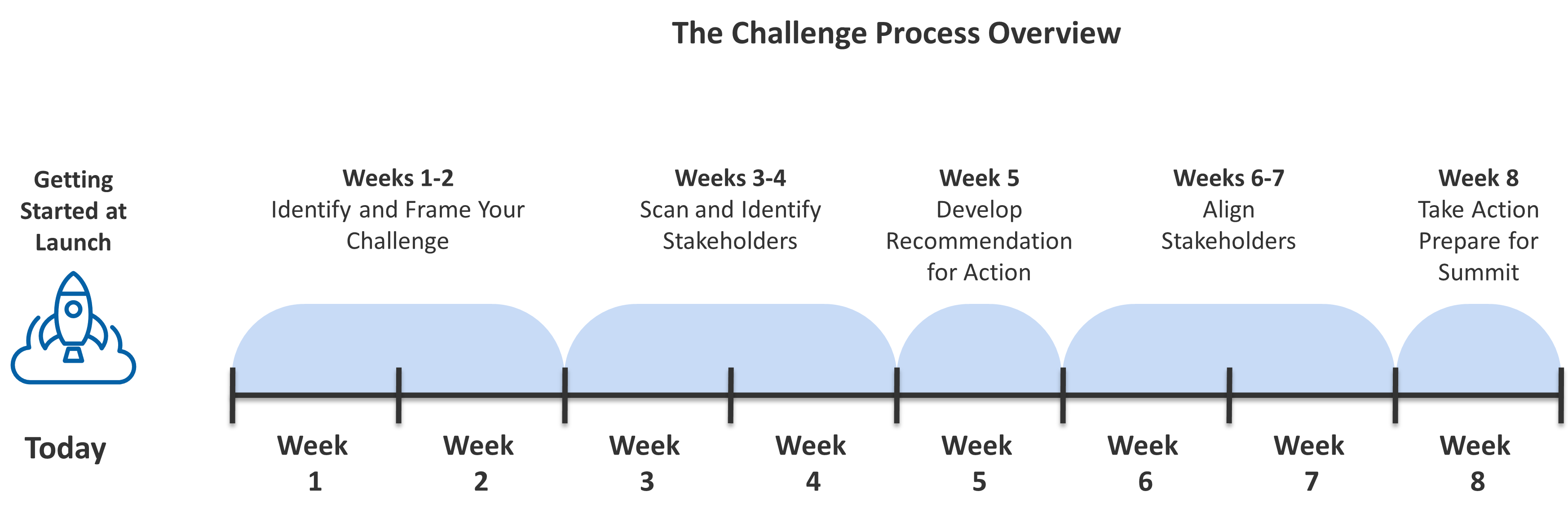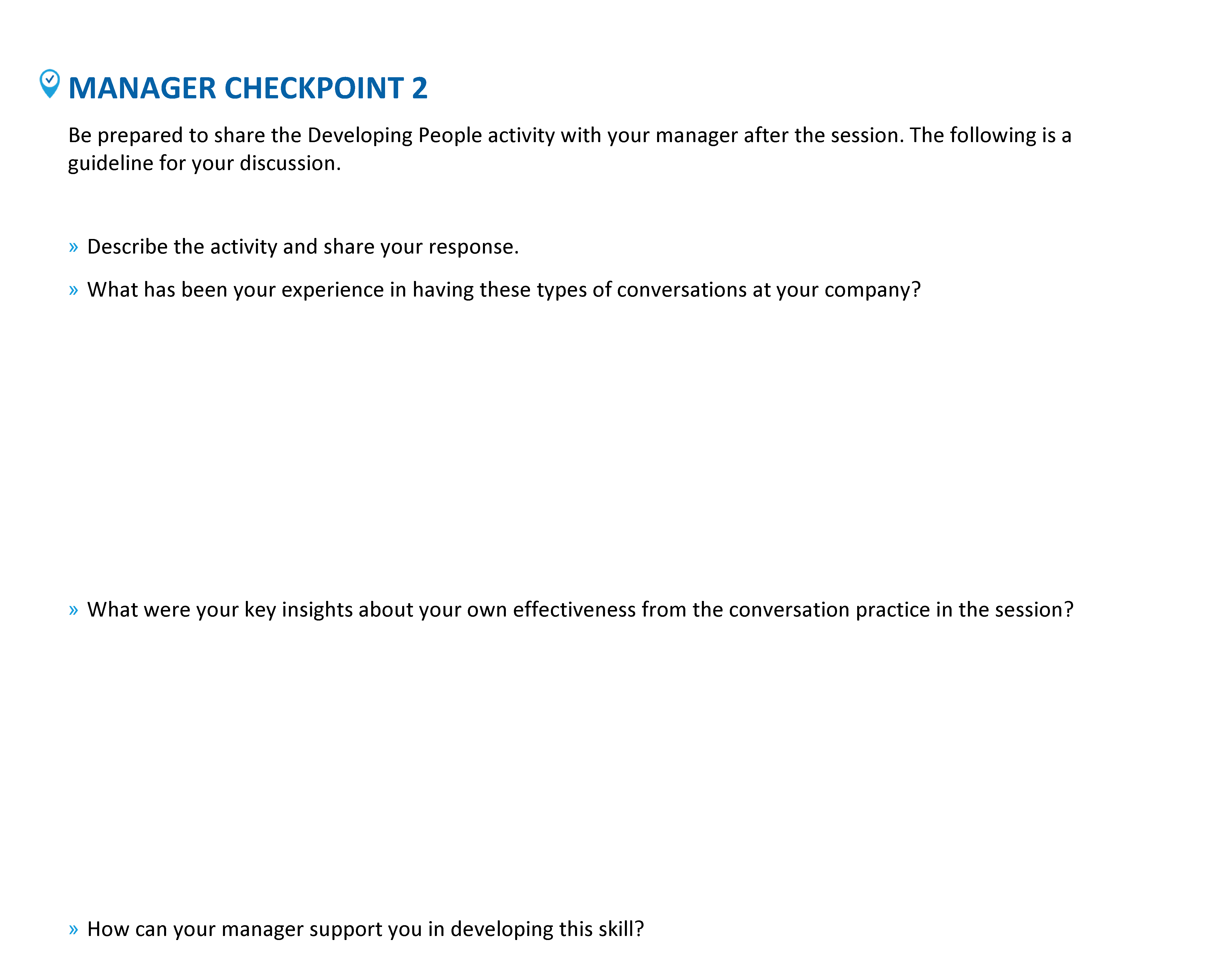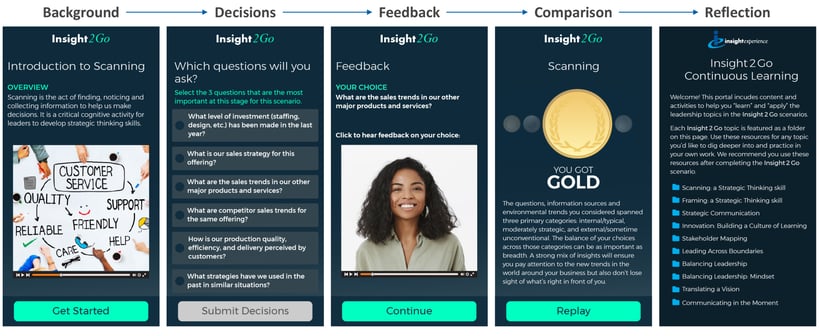Here at Insight Experience, we understand the need to ask ourselves the important questions about what happens after a leadership development program successfully draws to a close: How do we reinforce the learning? How do we measure its success and support the leaders who took a deep dive into the impact of their leadership actions?
The post-program reinforcement that is best for you depends on your objectives. We have four impactful solutions for expanding the value of leadership development beyond a learning event:
-
Share insights with senior executives and shape future programs.
-
Connect learning to work.
-
Engage learners’ managers.
-
Reinforce the learning.
Share Insights with Senior Executives and
Shape Future Programs

Most of our leadership programs include business simulation learning, which immerses learners in realistic and relevant business scenarios. We track the decision data, which reveals trends and gaps across a population and can serve as powerful insights for senior leadership. The data can also be used to shape a program or the creation of new programs for the audience in question. Below are two examples of data analysis that increased value to our clients.
Leadership Gaps: Decision data revealed that managers made far more effective decisions with high-performing employees and were overly directive and less effective with average and poor performers. This was valuable insight to our client, who realized the same dynamic was likely true in their own work environment. The risk to their business was that managers, unable to relate and connect to different performers, could not change behavior and create more robust succession pipelines with the majority of their workers.

Shifting Priorities for Leader Development: A program’s key learning objective was to help leaders avoid “analysis paralysis” in their data and focus more on people and personal observations. Though the simulation decision data illustrated the problem in the first year of the program's rollout (a vast majority of leaders spent far too much time looking at data and reports, all at the expense of coaching and development), this trend significantly improved over time. By the third year, we presented the shift to the client with a recommendation that the program be modified to reflect more current priorities. This was useful data to share with senior leadership and improved the program's return on investment.

Connect Learning to Work

Our clients vary widely with regard to the appetite and resources they have for post-program work. We develop a range of connection activities that enables learners to apply leadership frameworks and tools to their work back on the job. These can be 10-minute exercises to bring new thinking to a current work issue or multi-week processes that prompt learners to apply new approaches to projects. Our most valuable best practice is to allow learners to do this application to work that already exists, because the best leadership development does not create work on top of existing work priorities.


Engage Learners' Managers
It is critical to engage the learner's manager in order to give that person the time and space to complete the leadership development process and to give them an opportunity to support continued reinforcement. Managers need familiarity with what is being taught as well as insight into the reflection of their direct reports and their plans for the application of their learning. We package summaries of content and insights into Manager Guides and also encourage learners to complete “manager checkpoints” after the program. This takes their work connections to a deeper level.

Reinforce the Learning
 We know that each participant in a program connects to the content and practice at a very individual level, and the areas they want to explore more fully will vary. Our answer to this is a series of short scenarios that are each laser-focused on an individual topic. In 10–15 minutes, leaders can work with these scenarios as reminders or as deeper reflections into the topics most important to them. These are complemented by a learning library of podcasts, articles, blogs, and activities that provide opportunities to take advantage of even more reinforcement.
We know that each participant in a program connects to the content and practice at a very individual level, and the areas they want to explore more fully will vary. Our answer to this is a series of short scenarios that are each laser-focused on an individual topic. In 10–15 minutes, leaders can work with these scenarios as reminders or as deeper reflections into the topics most important to them. These are complemented by a learning library of podcasts, articles, blogs, and activities that provide opportunities to take advantage of even more reinforcement.

Learning reinforcement is key to what we do here at Insight Experience. It allows for concrete steps that employees can take to put into action what they learn while engaging in our leadership development programs. This leads to improved knowledge retention rates, which can increase productivity and, in turn, generate behavior changes that have the power to significantly impact your organization.

Karen Maxwell Powell
Karen Maxwell Powell is the President of Insight Experience, an award-winning global leadership development company with an expertise in business simulations. We develop and deliver group-based learning programs that grow leadership skills, develop business acumen, deepen relationships, and reinforce culture.









